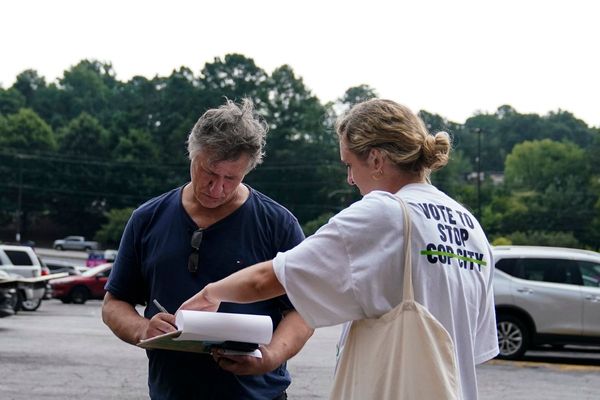Kerry Chant probably summed it up best: "All of us just want COVID to be gone."
The NSW Chief Health Officer was speaking at a press conference earlier this month and said while the idea of the virus vanishing was not possible, 2022 would be a year of "recalibration".
All states and territories in Australia are now living with COVID-19 and — bar occasional snap lockdowns and lockouts in some Top End communities — restrictions are, generally, being eased.
While there's no such thing as a COVID crystal ball, this is what life could look like this year.
An endemic virus
We are coming to the end of a COVID-19 "global health emergency", according to the head of the World Health Organization (WHO).
Director-general Tedros Adhanom Ghebreyesus says there are "different scenarios" as to how the acute phase of COVID will end, but it could be achievable by the middle of the year if every country vaccinates 70 per cent of its population.
However, Mr Ghebreyesus said it would be dangerous to assume "we are in the endgame", and stressed that living with the virus doesn't look like "50,000 deaths a week from a preventable and treatable disease".
In Australia, the future is promising.
Over the next six to 12 months our lives will be much less disrupted by the virus, predicts Christine Jenkins, the head of the respiratory group at the George Institute for Global Health.
Professor Jenkins believes the virus will soon become endemic on the east coast of Australia (and many other developed countries) which means COVID occurs regularly, but it does not devastate the population.
"I think we can be optimistic even though we don't exactly know how the virus will behave," she says.
"Many people remain fearful but the evidence is that natural immunity added to vaccination is actually very good."
Moving to endemic status does not mean COVID becomes harmless.
"You can still have very, very serious outcomes from endemic diseases, for instance tuberculosis, malaria and HIV are still endemic in parts of the world and those diseases are still devastating," Professor Jenkins says.
For this reason, all the habits we have adopted like social distancing and mask wearing will still play a role throughout 2022, and global travel won't look like it used to.
'Accepting' COVID deaths
Australia will continue to see COVID-related deaths, particularly among the elderly and those with underlying health conditions.
But authorities will need to determine how many deaths is too many, Professor Jenkins says.
"I do think we have to have a tolerance of death that we've been phobic about in this discussion," she says.
"It's sometimes regarded as lacking compassion if you talk about some deaths being acceptable, and so people don't want to say it, you know, even I'm reluctant to speak about it."
But in the same way Australia accepts between 500 to 1,000 flu deaths each year, a number of COVID deaths will have to be "accepted".
Professor Jenkins says health departments will most likely be modelling potential death rates for 2022 but she doesn't expect the estimations to be made public.
This year, personal responsibility has replaced government mandates in most parts of Australia, which means most people can decide what risks they are comfortable exposing themselves to.
Many people are now free to travel overseas, attend large gatherings and no longer have to isolate after every exposure to COVID.
This means people should focus more on their "immune fitness" this year, Professor Jenkins says.
"People will hopefully build up their general immune fitness ... this can be done in a number of ways including physical activity, adequate sleep and a healthy diet."
"People should also focus on their risk factors, particularly obesity which isn't mentioned enough when it comes to COVID."
COVID pills
Later this year, Australians will be able to access anti-viral medications, taken in the form of a pill, that reduce the virus' ability to multiply.
The prescription-only medicines are designed to be taken within a few days of the onset of symptoms.
From next month two drugs — Lagevrio, made by American pharmaceutical company Merck Sharpe & Dohme, and Paxlovid, by Pfizer — will hit the shelves in Australia.
The federal government has purchased a combined 800,000 courses of the pills which are best used by those who have mild to moderate COVID but are at risk of progressing to severe disease.
Paul Griffin, who is the director of Infectious Diseases at Mater Health Services, says this marks a significant step forward in how we battle COVID.
"We have already been using antibody and antiviral therapy we can give intravenously [in hospitals] but the addition of safe and effective antivirals that can be given orally, in my opinion, will make an enormous difference," he said.
Paxlvoid targets a process in COVID replication that does not relate to the spike protein which means it will still be highly effective even when the virus mutates.
But the pills have a drawback.
"Paxlovid is an expensive medicine and one that the Australian healthcare system cannot afford to supply to all Australians, says Andrew Rowland, Research Fellow in Clinical Pharmacology at Flinders University.
"[This means] vaccination remains our most important and cost effective means of fighting the pandemic."
On top of this, the WHO has just recommended two new drugs for the treatment of COVID-19 — baricitinib and sotrovimab.
The WHO found baricitinib improved survival and reduced the need for ventilation and sotrovimab reduced the risk of hospital admission for those with mild COVID, but at high risk.
New vaccine technology
In a matter of weeks Australians will have access to a new vaccine which is made very differently to those already available.
For this reason, experts hope it will encourage some unvaccinated people to roll up their sleeves.
Novavax is a "protein subunit" vaccine which means it introduces a part of the COVID virus to the immune system but it doesn't contain any live components of the virus.
This is different to the relatively new technology used in mRNA vaccines (Pfizer, Moderna) or adenovirus vaccines (AstraZeneca), which some people have been hesitant to receive.
"There will be a small group of people who were reluctant to get the mRNA or adenoviral vector vaccine, who may now go and get the Novavax vaccine, as it is a protein-based vaccine, similar in design to other non COVID-19 vaccines in use in Australia," says Dr Nicholas Wood from the Westmead Children's Hospital in Sydney's west.
Novavax could also help curb some vaccine inequality around the world.
It can stored for nine months at standard refrigeration temperatures so has significant logistical advantages and experts hope it will reach low and middle income countries, where less than 10 per cent of people are vaccinated.
"The approval of Novavax and other protein-based vaccines will help to fill a void in the global pandemic response," says international health professor Jaya Dantas from Curtin University.
"Protein-based vaccines have inexpensive production protocols and logistical advantages, including stability at a range of temperatures and will help to narrow the immunisation gap between rich and poor countries."
This year Australia will also likely approve Pfizer jabs for children aged between six months and five years old, with emergency authorisation expected to be imminent in the US.
On top of all this, the race is still on for a universal variant-proof COVID vaccine which would have high efficacy against any mutation the virus throws up in the future.
Vaccine researchers in Australia, Norway and the US are rapidly developing candidates and Australian teams hope there will be a "holy grail" vaccine by mid-2022.
The possibility of new strains
The bad news is that Omicron will probably not be the last variant of concern we have to grapple with.
New variants will undoubtedly keep emerging as they have throughout the pandemic but whether they will be more serious than Omicron is difficult to predict.
Mutations can be neutral or occasionally favourable but it's more likely that won't be the case.
"The reality is that we don't see many viruses that evolve into something less deadly," said infectious diseases specialist Sanjaya Senanayake from the Australian National University.
"We could have just been lucky with Omicron and there is no guarantee that the next variant of concern won't be more deadly and perhaps just as infectious,"
Professor Jenkins believes a new strain could be the biggest disruptor to the evolution from pandemic to endemic and the only solution is getting more vaccines to poorer countries so the virus has less chance of running rampant and mutating.
"Before we keep on giving ourselves repeated doses of boosters, we should be getting the third world countries vaccinated first and then wait for a new universal COVID vaccine," she said.







